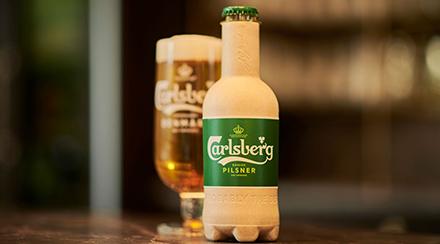The Carlsberg Group is trialling a new fibre bottle, putting the bio-based and fully recyclable beer bottle into the hands of consumers for the first time. Source: Timberbiz
The pilot, which is vital to accelerating Carlsberg’s ambition of making the beer bottle a commercial reality, will see 8,000 fibre bottles being sampled in eight Western European markets: Denmark, Sweden, Norway, Finland, United Kingdom, Poland, Germany and France.
The bottles will be placed into the hands of local consumers, customers and other stakeholders through select festivals and flagship events, as well as targeted product samplings.
Testing at this scale will give Carlsberg the opportunity to gather feedback on people’s experiences of the product, which will inform the next generation of design.
A significant milestone for the fibre bottle is its plant-based PEF polymer lining, which has been developed by Carlsberg’s partner Avantium. PEF is made entirely from natural raw materials, is compatible with plastic recycling systems, and can degrade into nature should it end up outside national recycling systems.
Beyond its sustainable packaging benefits, PEF functions as a highly effective barrier between the beer and the fibre outer shell, protecting the taste and fizziness of the beer better than conventional fossil-fuel-based PET plastic.
The outer shell of the bottle, produced by the packaging company Paboco, consists of sustainably sourced wood fibre and is also bio-based. This shell has the added benefit of insulative properties which can help keep beer colder for longer, compared with cans or glass bottles.
The bottle is 100% bio-based apart from the cap, which is currently needed to ensure the quality of the product, and together the bottle and cap are fully recyclable.
Generation 2.0 of the fibre bottle already performs better than the single-use glass bottle in the product´s lifecycle assessment, and Carlsberg has even greater ambitions for the subsequent Generation 3.0 design.
For every single-use glass bottle created, five Fibre Bottles could be created using the same carbon footprint. Ultimately, Carlsberg is aiming for the fibre bottle to achieve the same low carbon footprint as the refillable glass bottle, which is currently the best performing primary packaging when collected and reused in efficient systems.
When the Fibre Bottle is commercialised at scale, it will expand Carlsberg consumers’ choice and complement, rather than replace, existing packaging like glass bottles and cans.








